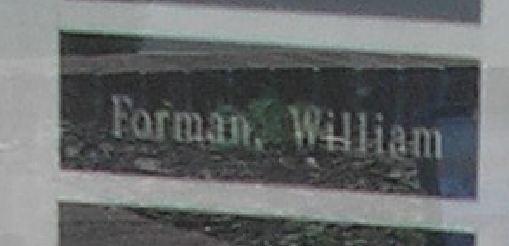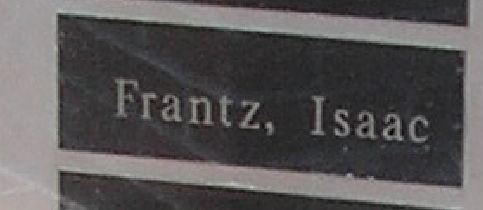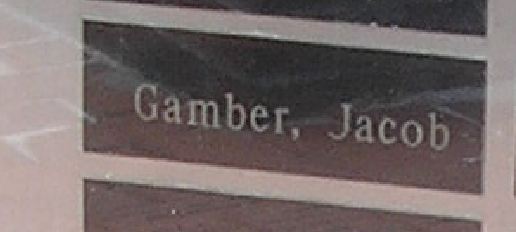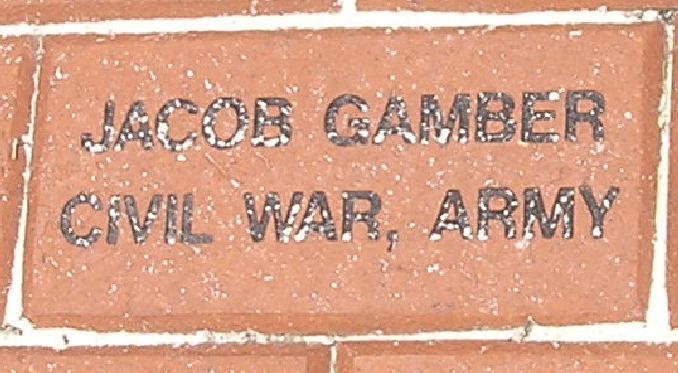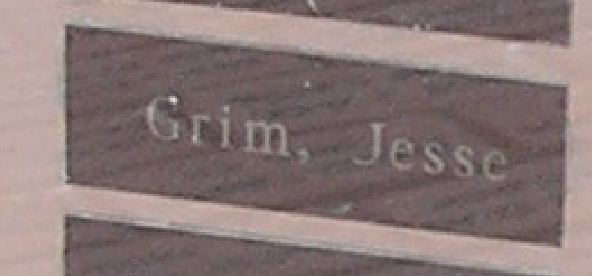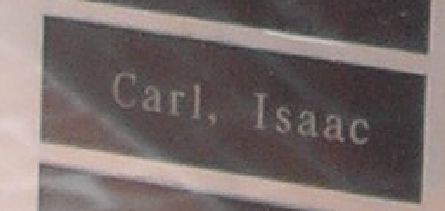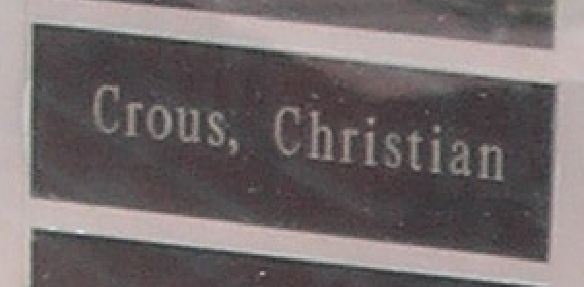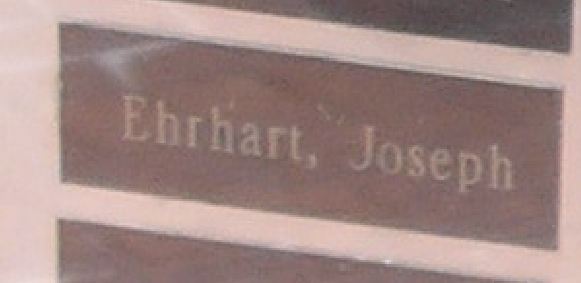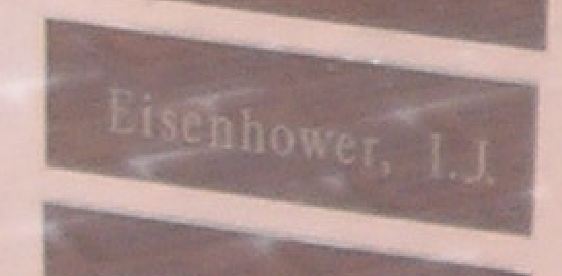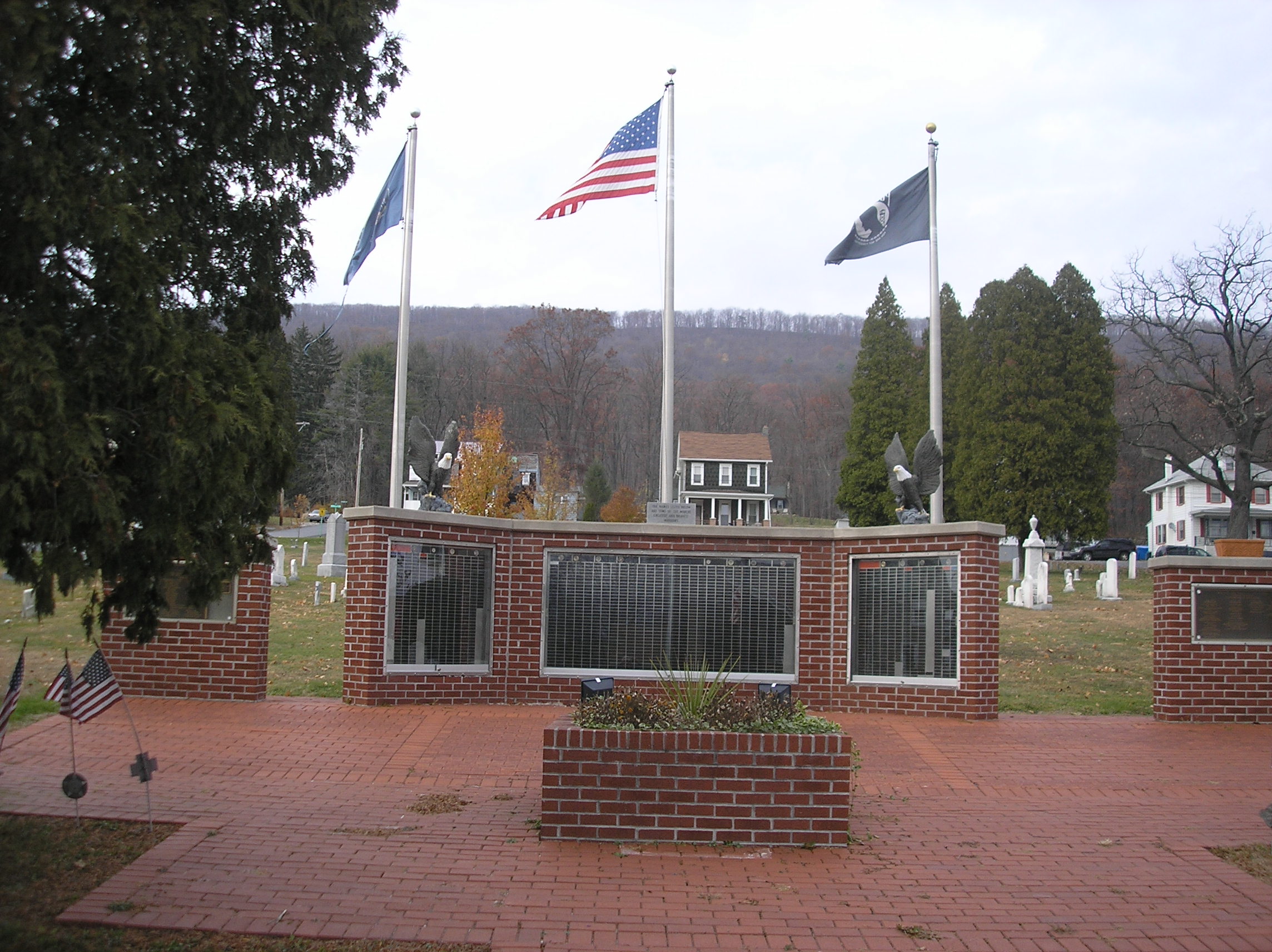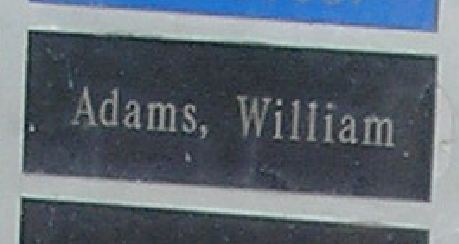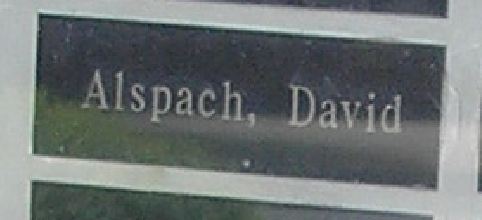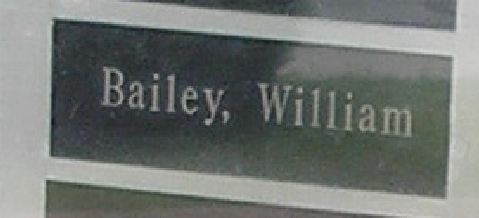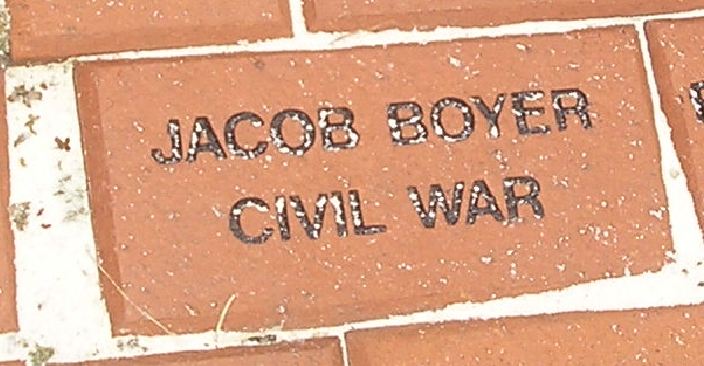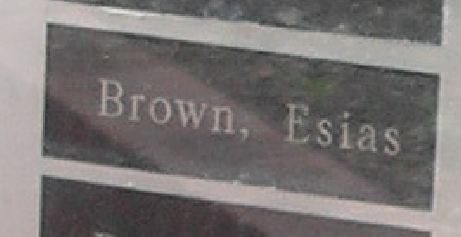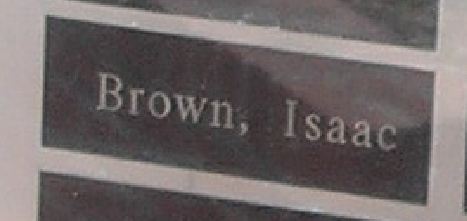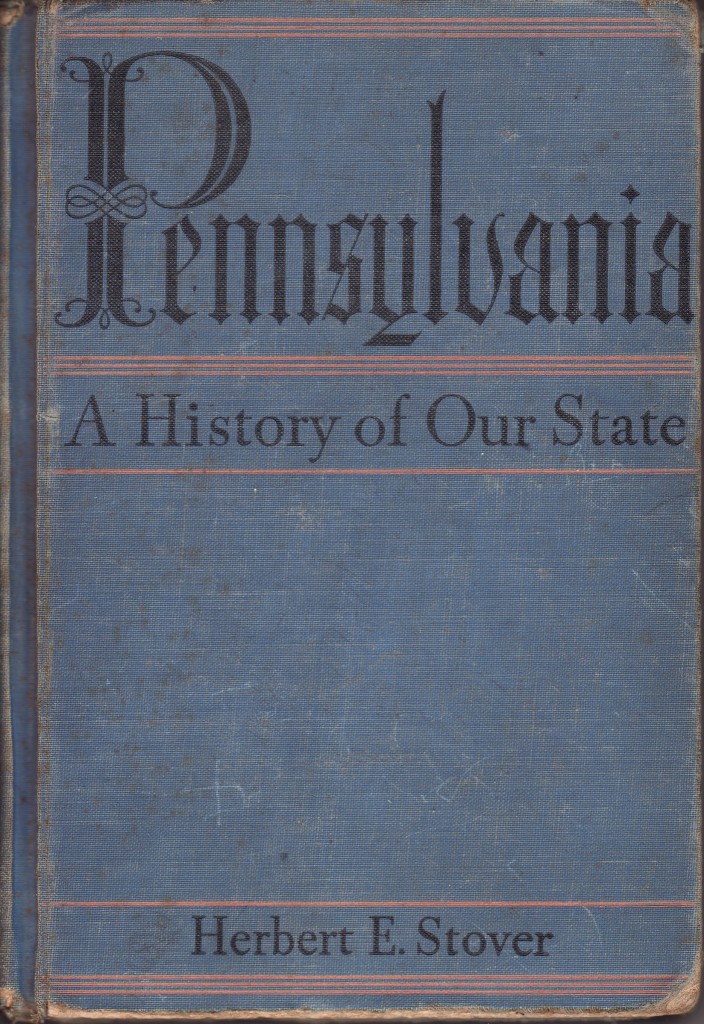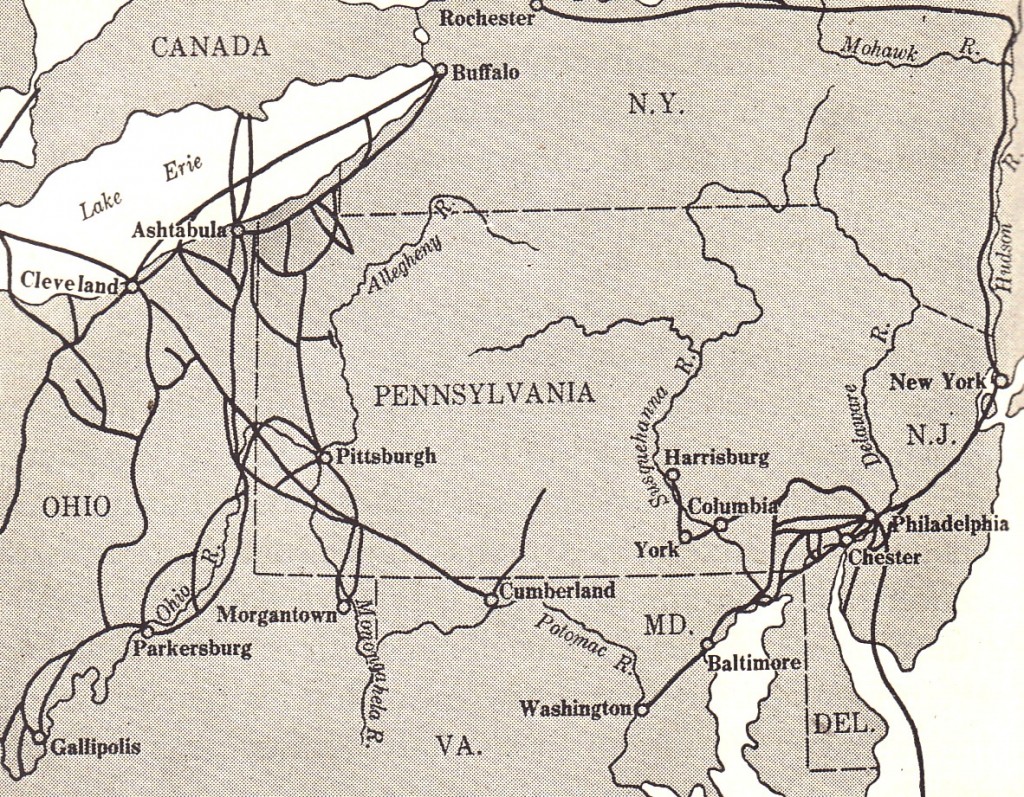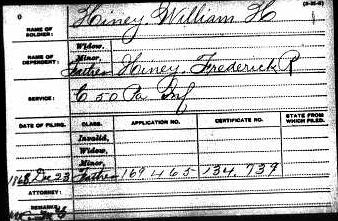Tower City, Porter and Rush Township Civil War Veterans – Part 3
Posted By Norman Gasbarro on July 12, 2012
The Tower City Borough, Porter Township and Rush Township Veterans Memorial is located at St. Paul’s Lutheran Church Cemetery which is located along Route 209 in Tower City, Schuylkill County, Pennsylvania. It was the subject of a prior post on this blog on 30 December 2010.
Within the glass cases on the monument are name plates for each of the eligible veterans who served in America’s Wars. The Civil War veterans are noted in the left case in the center section of the monument. To give due recognition to each of the Civil War veterans named on the monument, the name plates will be individually pictured followed by a brief description of the Civil War service of the veteran.
—————————–
WILLIAM FOREMAN (1841-?) served in the 93rd Pennsylvania Infantry, Company F, as a Private. In 1890, he was living in Tower City. At the time he enrolled in the infantry, he was working as a forgeman in Schuylkill Haven, Schuylkill and was mustered in at Pottsville. His wife’s name was Mary,.
—————————–
FRANK FOX (1837-?) was also known as Frank Fox. In 1890, his widow, Mary F. Fox, was living in Tower City, and although she reported that she was the widow of a Civil War veteran, she was unable to name his regiment, company, or dates of service.
—————————-
JOHN S. FOX (1832-1907) was living in Tower City, Schuylkill County, in 1890, but for some unknown reason was reported on the Wayne Township, Dauphin County census sheet for that year. He served in the 107th Pennsylvania Infantry, Company G, as a Private, from 5 March 1862 through 13 July 1865 which included a re-enlistment on 29 February 1864 at Mitchell Station, Virginia. His wife’s name was Hannah and his occupation was carpenter. Toward the end of his life, he was confined to the Soldiers’ Home in Dayton, Ohio, and he died while on furlough from the home.
—————————-
ISAAC FRANTZ (1843-1885) served in the 208th Pennsylvania Infantry, Company H, as a Private, from 16 August 1864 through 1 June 1865. His widow was living in Tower City in 1890. He is buried in St. Paul’s Lutheran Church Cemetery, Tower City. For more information about him, click here.
—————————–
JACOB GAMBER (1833-1890) is also found as Jacob Gamper. His widow, Anna Mary [Schaumber] Gamber, was living in Tower City in 1890, Jacob having died just before that census was taken. His service, which was in the 51st Pennsylvania Infantry, Company B, as a Private, resulted in him being “ruptured,” which was reported in the 1890 record. He is buried in St. Paul’s Lutheran Church Cemetery in Tower City.
Family members of Jacob Gamber have also provided a memorial brick on the terrace in front of the monument.
—————————–
WILLIAM GOODMAN (1831-1907) served in the 39th Pennsylvania Infantry (Emergency of 1863), Company H, as a Private and was living in Porter Township, Schuylkill County, in 1890. He served from 29 June 1863 through 2 August 1863. His wife’s name was Christina Rena [Hand] Goodman.
—————————-
HORATIO GRIM (1832-1903) was also known as “H. O. Grim” and sometimes the surname is spelled “Grimm” in the records. He was a farmer in Berks County at the time of his enlistment in the 48th Pennsylvania Infantry, Company D, in which he served as a Private. His term of service was from 23 September 1861, with re-enlistment on 1 January 1864 at Blaine’s Crossroads, Tennessee, and discharge on 31 July 1865. Records indicate that from 21 April 1864, he was sick in the hospital at Annapolis, Maryland. His brother Jesse Grim also was a Civil War veteran (see below).
—————————–
JESSE GRIM (1841-1894), the brother of Horatio Grim (above), in also found in the records at “Jessie Grimm” and “Grin. He served in the 173rd Pennsylvania Infantry, Company D, as a Private, but one database indicates he was a Musician. In 1890, he was living in Tower City and complained of dysentery,which he blamed on his war service. Jesse married a woman named Amanda. When he died he was buried in Calvary Cemetery, Wiconisco, Dauphin County. For additional information on Jesse, click here.
—————————–
To be continued tomorrow….
Other posts in this series may be accessed by clicking here.
 ;
;

